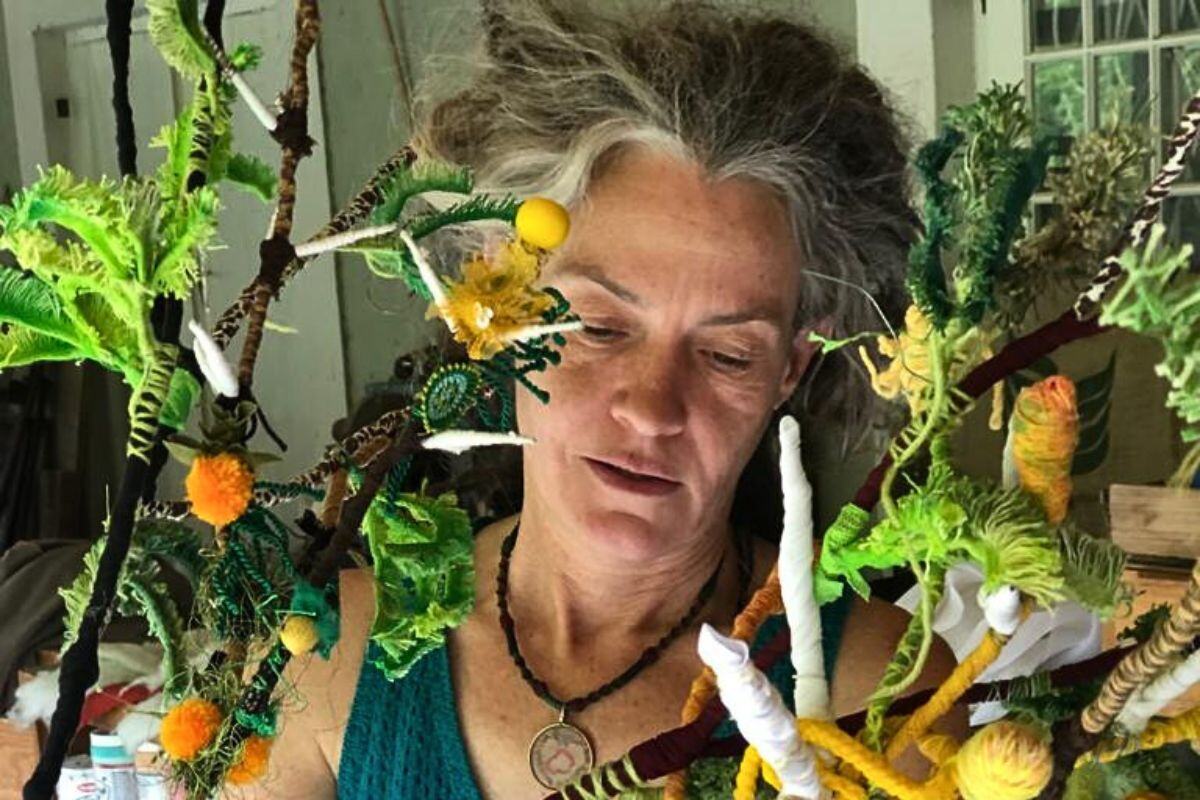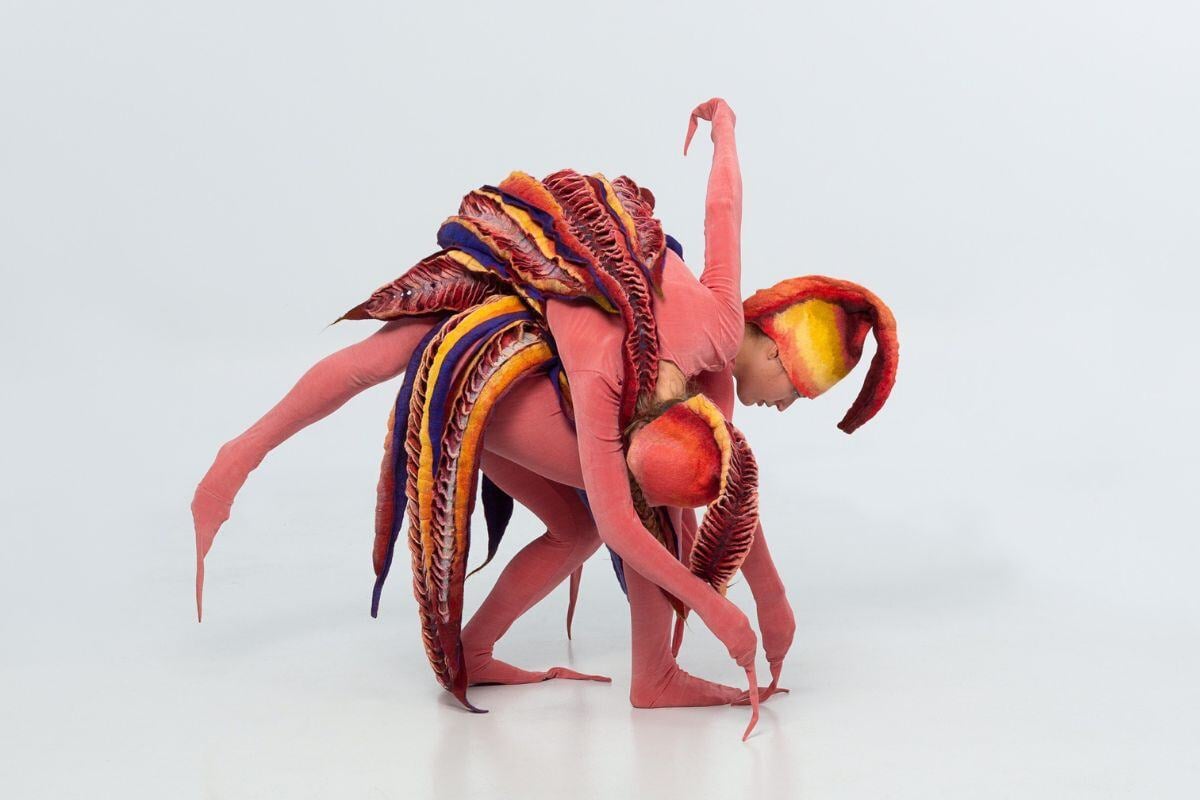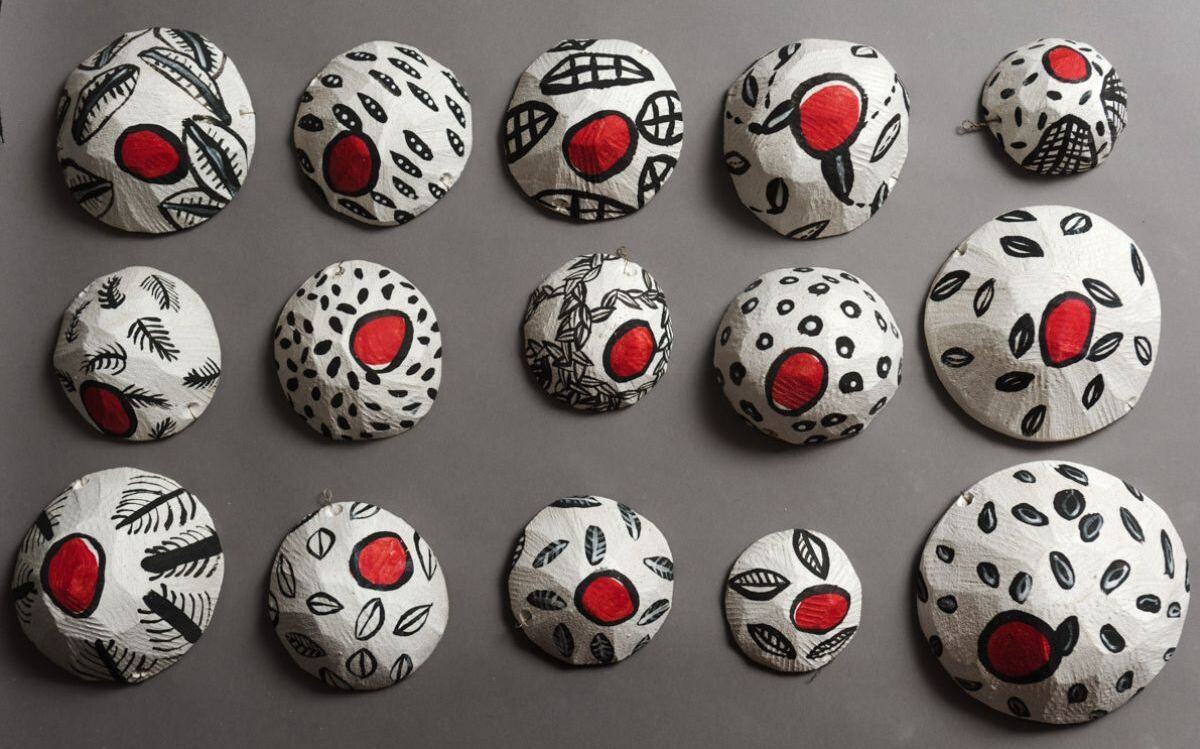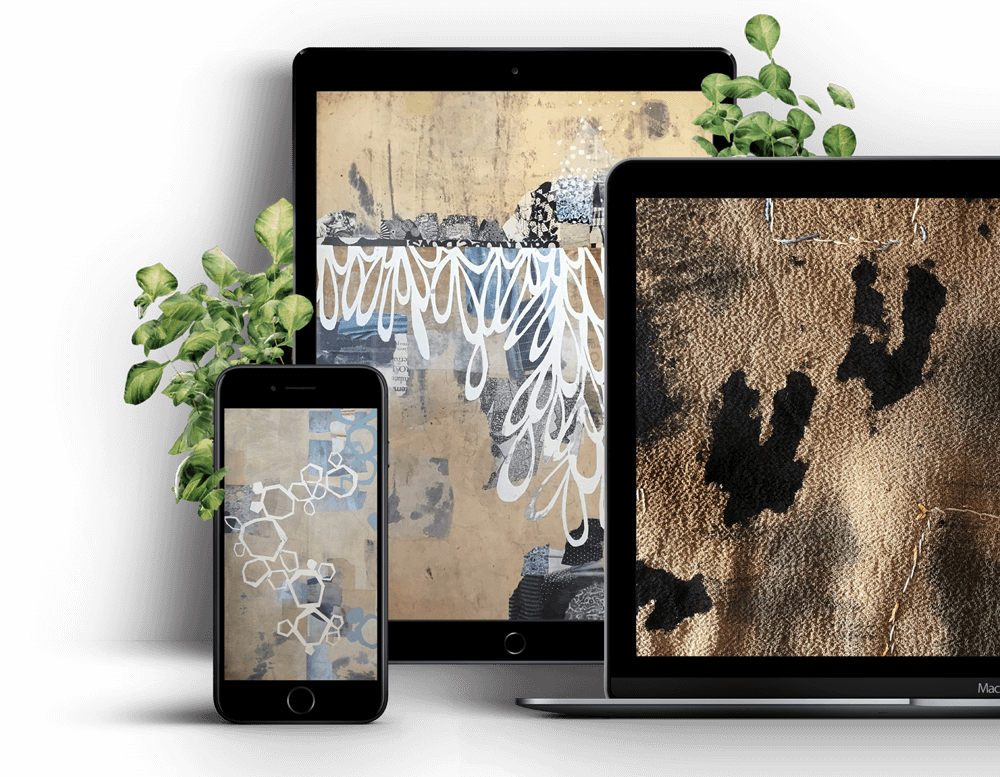Joel S. Allen: The Work Takes What The Work Needs
Learn about the flow between making, moving and installing, overcoming challenges and giving your art the time it needs from Fibre Artist Joel.
Joel S. Allen's Friday Feature Artist Interview can be found at the bottom of this page.
From flora to aquatic life, from engineering and architecture, to science and science fiction, all these things feed the curiosity and imagination of installation artist and sculptor Joel S. Allen. Based in Steamboat Springs, Colorado, Joel loves the challenge of combining different elements into one elegant idea and is obsessed with developing processes that satisfy his compulsive nature for repetitive motion.
The craft of making has always been at the core of Joel’s creative pursuits and a relentless pursuit of elegance through complexity lies at the heart of his art practice. Each creation is meticulously hand-wrapped with fibres.
Layer upon layer, tension weaves the narrative of form, where lines evolve into a tangible presence, and transform thought into substance. His sculptures beckon viewers to venture closer, to immerse themselves in a dialogue of form and origin. From a distance, they view as enigmatic cocoons suspended in space, but upon closer inspection reveal a synthesis of everyday objects transformed by the alchemy of Joel’s handiwork.
Joel's work can be found in public, private and government collections. He has exhibited extensively across the United States, and in 2014 was handpicked from over a thousand artists by the Crystal Bridges Museum of American Art, to participate in its state-of-the-art Discovering American Art Now exhibition. Believing that art should amaze and express our experience here on Earth, Joel turns everyday objects and things that would be relics of the past into the art of today, creating a wow factor with a sense of the somewhat familiar, while being all brand new.
From Geology to Art
Joel didn’t start out to be an artist, “I had first gone to college to be a geologist. This came from working on a drill rig, specifically doing core sampling all over the state of Montana. We were studying the different layers of soil that had been moved in the last ice age. When I was in my sophomore year of college, (I was almost 40 by this time), the only class available to me to fill out my schedule was an art class.
And while they teach you a lot of things in school, they never teach you how to find fulfilment in your life. I’d been searching, with so many jobs, trying to find a way to fulfil my curiosity and creativity. The art class was like a giant gong in my head and I changed majors right away. I threw myself into art completely and I have never been disappointed.”
Joel’s combination of skills led to a role growing crystals. “A crystal growing company was looking for someone with a diverse range of skills and they hired an artist to come in and work there. I was recruited as a ‘visual engineer’ and I started to learn all about the processes for making crystals grow, which was amazing.”
Work and art began to merge, with Joel creating intricate hanging artworks while working as a crystal grower. Using materials including yarn (sometimes up to four miles of yarn per piece), steel wire, wine corks, bottles, acrylic sheeting, copper and wood, his works are hand-forged and hand tied as he builds shapes and sculpts with lines to create a range of forms.
“I like the process of finding things and transforming them into something,” he explains. “You can transform the ordinary into something elegant, which is a fun challenge.”
Joel’s works are eclectic, from room-sized gallery installations to hanging fibre sculptures and acrylic wall art.
.jpg?width=468&height=625&name=Joel%20S.%20Allen%20(3).jpg)
The Beauty of Repetition
“I like to use things you can find at a hardware or thrift store,” Joel explains. “I find what I need and start producing, over and over. In that repetition, there’s a space in my head where I love to go in that motion. I don’t often listen to music because I want the quiet, to be able to let my mind go where it wants to go. The hand motion becomes second nature and this allows your mind to start to consider shapes and textures and other things.”
“It’s kind of like gardening, you get your hands in the earth and forget about other things, and it takes you to ‘your place’.”
Joel says he could work seven days a week. “I think my top skill is either stubbornness or tenacity. Once I start something I just want to keep going. I remember I was preparing for a show during the pandemic and I only took one day off in ten months. You just get into the rhythm of work and it almost becomes a necessity.”
Acknowledging Time
“In a process-oriented endeavour, time leaves a record of what happens, and you can see it in a piece of work,” Joel says. “You can see where someone’s hands have had to be to create a piece. It’s the type of work I’m drawn to and you can sense the labour of love in a piece. I hope people are able to see that in my work; a labour of love.”
Joel’s process involves switching between parts and pieces of projects. While he tracks the materials used, he’s never sure of how much time something has required, and some even take years because they involve tens of thousands of pieces. “I tell my students; ‘The work takes what the work needs’. You can’t get away from it; if you short-change the work, it shows up in the work. So whatever the work needs is what you have to give.”
Joel will create a series of pieces, each with variation. “I don’t really plan things out other than a colour palette. I’ll put all my yarn out and pick from what I have. I might do something different with the shape or rhythm, and play on each one, moving what I learn to the next piece. I like to think of my installations as ‘families’ and I’ve never made two pieces the same and each of them will have an anomaly somewhere.”
.jpg?width=477&height=596&name=Joel%20S.%20Allen%20(4).jpg)
Installations
Joel describes how “not much happens in the way of sales” when an artist creates large pieces, but he has done large-scale works for museums all the same. He talks about one of his works, which was designed to question the pharmaceutical industry’s profit models. “I would try to interact with the audience and allow people to express their opinions, even write comments. But you do have to think with installations, ahead of time, how much you have to think about how you will install and show your work in public.
I learned a lot of lessons about how to build entire walls in the entryways of museums and react differently to the different spaces. It was refreshing because it allowed me to explore multi-sensory works; for example, with one museum I turned the entry into a waiting room with rubbing alcohol on a sponge, that transported people to thinking about medicine and how we care for each other.”
Colours and Coachella
Being in the right place at the right time led to Joel’s collaboration with Coachella. “The creative director for Coachella happened to go through a museum and saw my work and contacted me to do eight pieces for the entryway of their new building in downtown LA. But they wanted colour. I went right to yarn and thought, ‘Well, what can I do with this?’ I had to kind of get used to a whole new kind of material. It just opened me up to colour. That was exciting. To finish those eight works for Coachella set me on a path for the next 10 years of making works with yarn, which was really interesting.”

Creating and Teaching Art
Joel has been teaching since he left grad school. “I did a year of service as an artist in residence from my hometown’s school district, then I went on to teach at Montana State University and took over the sculpture department. I’ve also taught at a Colorado Mountain School for 13 years, with 8 to 12 students per class. I’ve enjoyed it the whole time.”
All this, while also creating pieces of his own. “I always make time to work. When I was growing crystals, I lived a five minute bike ride from my job and I would come home and work at lunch, or hit the studio at night. There’s a lot you can achieve if you sleep less!”
Joel’s advice for creatives comes from Constantine Brâncuși; “Simplicity is complexity resolved. I like this idea because you need to understand how complex even simple materials can be to really understand them. You may never fully understand its full value, but you can work towards that the whole time. So give your materials respect.”
Join Our Newsletter
OUR YOUTUBE CHANNEL
View our interviews and more on our Youtube channel!
OUR FACEBOOK GROUP
Join our Community and stay updated with our upcoming announcements!



